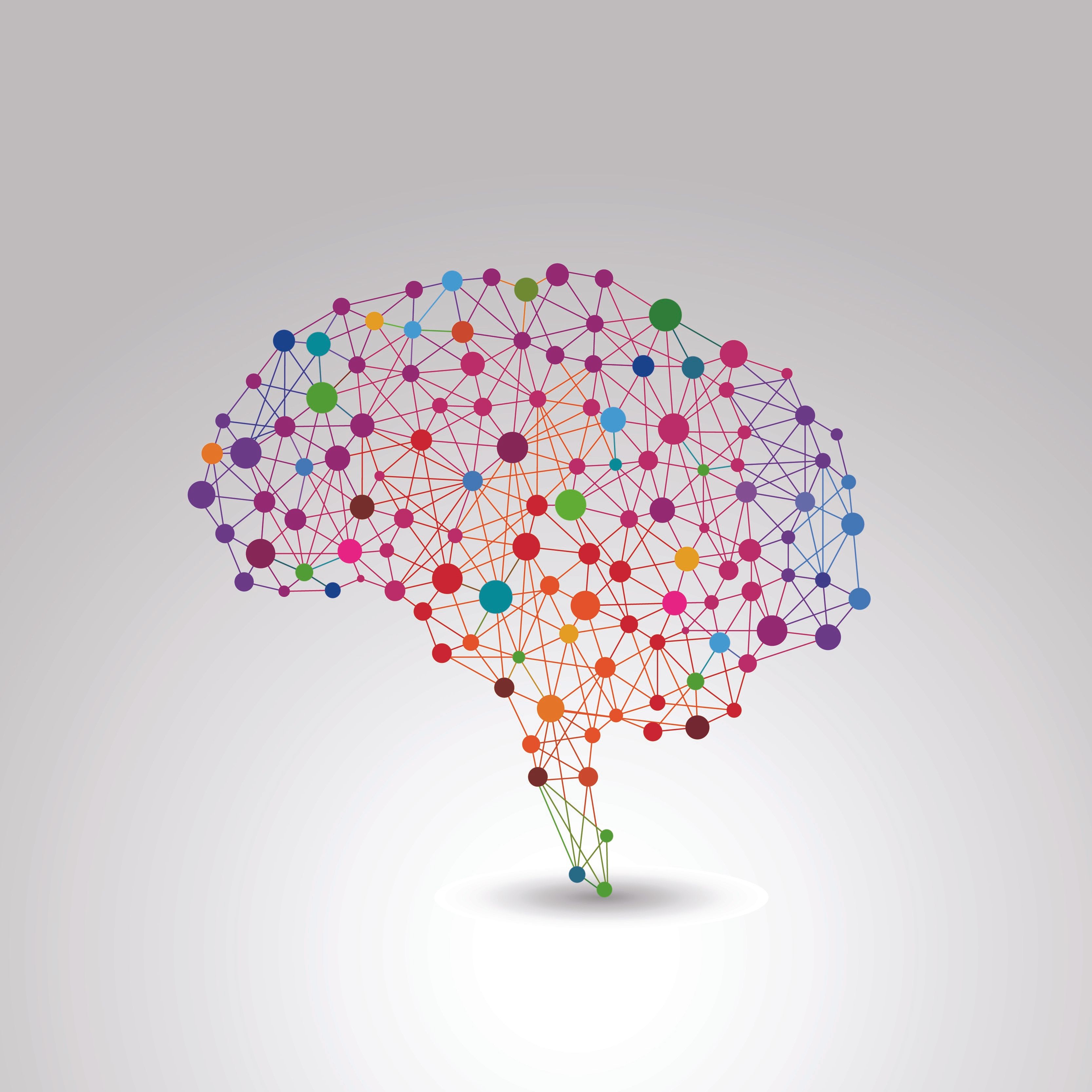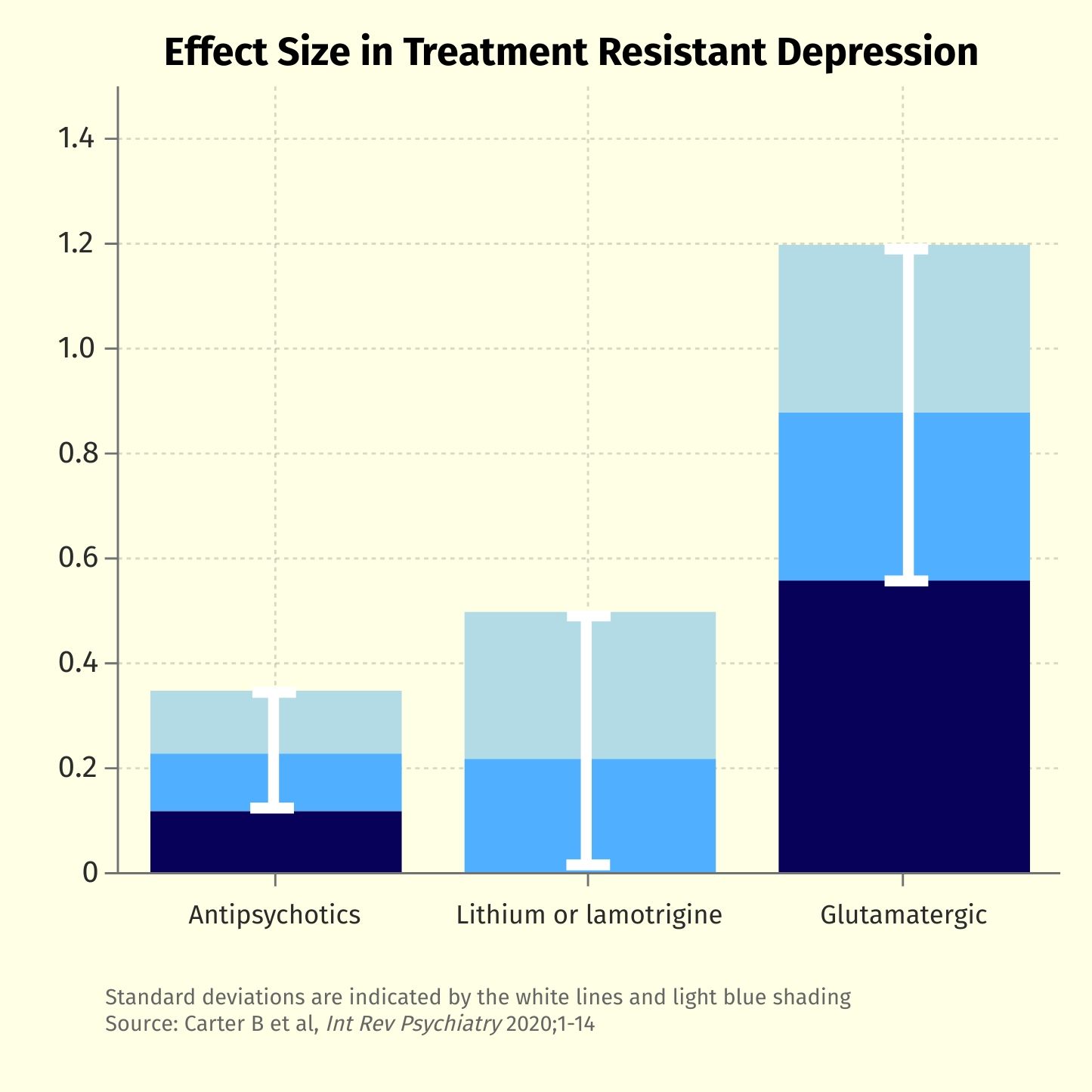Article
New Answers for Treatment-Resistant Depression
Author(s):
It is much easier to treat depression after 6 months of non-response than 6 years, regardless of which intervention is used, so time is of the essence.
AnitaPonne/Shutterstock

RESEARCH UPDATE
Treatment-resistant depression (TRD) is a category that is all-too-easy to fall into. A lack of meaningful response to two full antidepressant trials is all it takes, and 1 in 3 patients with depression end up there. Once they do, the path out is uncertain. We have two FDA-approved therapies for TRD: olanzapine/fluoxetine combination (Symbyax, approved in 2009) and intranasal esketamine (Spravato, approved in 2019).
Beyond that, most research on TRD used a looser definition: failure of just one trial (also known as Stage I TRD in the Thase-Rush Staging Method). That was how transcranial magnetic stimulation (TMS) got approved and how the majority of antidepressant augmentation studies have been conducted.For example, in a 2015 meta-analysis of TRD, three quarters of the studies included patients who had only failed one antidepressant, and half of them focused exclusively on that population.1
A new meta-analysis set out to address this gap by focusing only on studies of true TRD with at least two failed antidepressants. They arrived at some surprising results which I’ll review here.
The new study
Led by Allan Young, the British and Canadian researchers gathered 27 medication trials and 3 psychotherapy trials and analyzed the data 2 different ways. First by comparing the change in depressive symptoms with each treatment (the pre- post- effect size), and then through a network meta-analysis that compared how treatments fared against a common placebo arm.2,3
They found a significant benefit with the atypical antipsychotics, specifically (number of trials are in parentheses): aripiprazole (5), brexpiprazole (5), cariprazine(1), olanzapine (combined with fluoxetine) (1), and quetiapine (2). All of those are FDA-approved as antidepressant augmentation except cariprazine, which only worked in 2 out of 3 of its published trials.4
Lithium, which performed well as an augmentation agent after 1 antidepressant failure,1 did not work as well when limited to patients with true TRD. That conclusion was problematic though, as the authors lumped it with lamotrigine. A 2017 meta-analysis, however, found only marginal benefits for lithium and lamotrigine in true TRD when the two were analyzed separately, but with the small size of the trials I would say that the jury is still out.5
The novel finding in this analysis was the large effect of glutamatergic therapies: ketamine (3) and two repurposed antibiotics, minocycline (1) and d-cycloserine (1). When lumped together, their effect size was large (0.9), compared to the small effect size (0.2) of the atypical antipsychotics. This finding supports the glutamatergic system as a target for difficult to treat depressions, with a few caveats.
First, mechanisms of action are rarely clear, and it is possible that these medications exert their effects through other pathways. Minocycline also has anti-inflammatory and neuroprotective effects,6 and there is controversy over whether ketamine works through the glutamate or opioid system or some combination of the two.7
Second, ketamine’s benefits are rapid but short-lived. After 1 week, its safety and efficacy are not well established.8 Esketamine (Spravato), the S- isomer of ketamine, has controlled data lasting up to 4 weeks,9 but its benefits declined over that time and in some studies were no longer significant by the 4-week mark.10-12
The large effect in the glutamatergic category was not limited to ketamine but was shared by the novel agents minocycline and d-cycloserine as well. Each of these, however, was supported by only one small trial in true TRD.13,14 Of the two, minocycline is better studied, with 18 randomized controlled trials in depression which─when analyzed together─also yielded a large effect size (0.78).7 All of those studies were small, but a large trial of minocycline in TRD is underway.15
When to use psychotherapy
With each failed treatment, life’s problems multiply. Relationships grow strained, job performance declines, and avoidant behaviors become further ingrained. It should not come as a surprise then that psychotherapy works in TRD, but the magnitude of that effect is unexpected. In Young’s analysis, psychotherapy had a slightly larger effect than pharmacotherapy in TRD. Those therapies were cognitive behavioral therapy (CBT) for 6 weeks, mindfulness based CBT for 8 weeks, and psychoanalytic psychotherapy, delivered weekly over 1.5 years.
The caveat here is that it is very difficult to compare treatments across different studies with different types of placebos, but the message is clear. Psychotherapy is not just for mild depression, but has proven its worth in moderate-severe depression, chronic depression, and─with these three recent trials─stage II TRD.
Limitations
Network meta-analyses have many limitations. Chief among them is the assumption that all of these trials share a common placebo effect. The “placebo,” however, is not a sugar pill, but an amalgam of varied factors including hope, the kind attention of the research team, and the natural course of the illness. If these effects were small, this wouldn’t be a big deal, but they are not. They account for around 30% of the improvement in antidepressant trials.
The bottom line
Young’s work digs up some new tools for TRD, but it also reveals how limited the TRD toolbox is. Novel medications had large effects but limited track records, while established therapies had only small effect sizes. Electroconvulsive therapy (ECT) was left out of the analysis, but even this gold standard becomes less likely to work with each failed medication trial, starting with the first one.16 Time is of the essence here. It is much easier to treat depression after 6 months of non-response than 6 years, regardless of which intervention is used.
When you set out on this work, bring the toolbox, but also bring a compass and a map (ie, a mood chart and a rating scale like the PHQ). You’ll need that to guide the treatment. Otherwise, you’re left asking the patient where to go. And while collaborative care is essential to this work, symptoms like hopelessness, indecisiveness, and inertia are unlikely to steer a steady course. Left unattended, they may lead to drop-out. It’s our job to attend.
Dr Aiken is the Mood Disorders Section Editor for Psychiatric Times, the Editor in Chief of The Carlat Psychiatry Report, and the Director of the Mood Treatment Center. His written several books on mood disorders, most recently The Depression and Bipolar Workbook. He can be heard in the weekly Carlat Psychiatry Podcast with his co-host Kellie Newsome, PMH-NP. The author does not accept honoraria from pharmaceutical companies but receives royalties from PESI for The Depression and Bipolar Workbook and from W.W. Norton & Co. for Bipolar, Not So Much.
References
1. Zhou X, Ravindran AV, Qin B, et al. Comparative efficacy, acceptability, and tolerability of augmentation agents in treatment-resistant depression: systematic review and network meta-analysis. J Clin Psychiatry, 2015;76(4):e487-498.
2. Carter B, Strawbridge R, Husain MI, et al. Relative effectiveness of augmentation treatments for treatment-resistant depression: a systematic review and network meta-analysis. Int Rev Psychiatry. 2020;1-14.
3. Strawbridge R, Carter B, Marwood L, et al. Augmentation therapies for treatment-resistant depression: systematic review and meta-analysis. Br J Psychiatry. 2019;214(1):42-51.
4. Fava M, Durgam S, Earley W, et al. Efficacy of adjunctive low-dose cariprazine in major depressive disorder: a randomized, double-blind, placebo-controlled trial. Int Clin Psychopharmacol. 2018;33(6):312-321.
5. Papadimitropoulou K, Vossen C, Karabis A, Donatti C, Kubitz N. Comparative efficacy and tolerability of pharmacological and somatic interventions in adult patients with treatment-resistant depression: A systematic review and network meta-analysis. Curr Med Res Opin. 2017;33(4):701-711.
6. Rosenblat JD, McIntyre RS. Efficacy and tolerability of minocycline for depression: A systematic review and meta-analysis of clinical trials. J Affect Disord. 2018;227:219-225.
7. Perez-Caballero L, Perez V, Berrocoso E. What ketamine can teach us about the opioid system in depression? Expert Opin Drug Discov. 2020;1-4. doi:10.1080/17460441.2020.1781812
8. Xu Y, Hackett M, Carter G, et al. Effects of low-dose and very low-dose ketamine among patients with major depression: A systematic review and meta-analysis. Int J Neuropsychopharmacol. 2016;19(4):pyv124.
9. Zheng W, Cai DB, Xiang YQ, et al. Adjunctive intranasal esketamine for major depressive disorder: A systematic review of randomized double-blind controlled-placebo studies. J Affect Disord. 2020;265:63-70.
10. Fedgchin M, Trivedi M, Daly EJ, et al. Efficacy and safety of fixed-dose esketamine nasal spray combined with a new oral antidepressant in treatment-resistant depression: Results of a randomized, double-blind, active-controlled study (TRANSFORM-1). Int J Neuropsychopharmacol. 2019;22(10):616-630.
11. Ochs-Ross R, Daly EJ, Zhang Y, et al. Efficacy and safety of esketamine nasal spray plus an oral antidepressant in elderly patients with treatment-resistant depression-TRANSFORM-3. Am J Geriatr Psychiatry. 2020;28(2):121-141. doi:10.1016/j.jagp.2019.10.008
12. Canuso CM, Singh JB, Fedgchin M, et al. Efficacy and safety of intranasal esketamine for the rapid reduction of symptoms of depression and suicidality in patients at imminent risk for suicide: results of a double-blind, randomized, placebo-controlled study. Am J Psychiatry. 2018;175(7):620-630.
13. Heresco-Levy U, Gelfin G, Bloch B, et al. A randomized add-on trial of high-dose D-cycloserine for treatment-resistant depression. Int J Neuropsychopharmacol. 2013;16(3):501-506.
14. Husain MI, Chaudhry IB, Husain N, et al. Minocycline as an adjunct for treatment-resistant depressive symptoms: A pilot randomised placebo-controlled trial. J Psychopharmacol. 2017;31(9):1166-1175.
15. Husain MI, Cullen C, Umer M, et al. Minocycline as adjunctive treatment for treatment-resistant depression: study protocol for a double blind, placebo-controlled, randomized trial (MINDEP2). BMC Psychiatry. 2020;20(1):173. Published 2020 Apr 15.
16. Dombrovski AY, Mulsant BH, Haskett RF, Prudic J, Begley AE, Sackeim HA. Predictors of remission after electroconvulsive therapy in unipolar major depression. J Clin Psychiatry. 2005;66(8):1043-1049.







